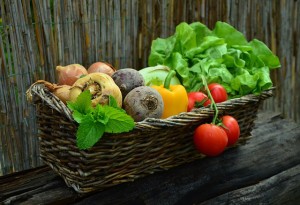Have you ever stopped to think about your vegetable gardening goals?
 If you are like many gardeners, you may find your main motivation is simply to get outside and reconnect with nature by digging in the dirt. You may also enjoy gardening as a way to squeeze more physical activity into an otherwise hectic schedule. Without question, growing a vegetable garden is a very relaxing way to accomplish these goals.
If you are like many gardeners, you may find your main motivation is simply to get outside and reconnect with nature by digging in the dirt. You may also enjoy gardening as a way to squeeze more physical activity into an otherwise hectic schedule. Without question, growing a vegetable garden is a very relaxing way to accomplish these goals.
A sense of personal satisfaction and better overall health are admirable and worthwhile objectives on their own. However, if you dig a little deeper you may find you have a number of other goals for your vegetable garden. If you find you are short on gardening space, clearly defining these goals before you begin growing will make it a lot easier to achieve them.
For example, if you want to reduce your monthly grocery bill throughout the year by preserving part of your harvest, you’ll need to figure out how much you can actually grow in the space you have available. Even if you just want to grow enough so your family can enjoy fresh produce during the warmer months, you’ll still need to figure out what you want to grow and how to make it work within your personal space and time constraints.
Take Stock of Your Personal Resources
In most cases, the amount your garden can produce will be defined by the amount of resources you can devote to it. Therefore, you’ll want to ask yourself the following questions:
1. How much time do you have to work in your garden?
2. How much space do you have available to plant?
3. If you plan to preserve part of your harvest, where will you store it?
4. What is your budget?
This last question is often overlooked, but it is very important because financial considerations will determine how much you can invest in seeds, transplants or other supplies. Honest answers to all of these questions will ensure you don’t get in over your head or become discouraged before you’ve had a chance to see results. Defining the amount of resources you have available upfront will allow you to set more achievable vegetable gardening goals.
Plus, it’s always easier to overcome a challenge once you clearly define it. Taking stock of your current situation can help you find creative solutions to potential challenges. For example, perhaps you can overcome a small budget by swapping seeds with neighboring gardeners or online communities. If you are short on growing space, maybe you can take advantage of unused vertical space along a sunny wall.
Define the End Results You’d Like to Achieve
Once you’ve developed a clear picture of what you have to work with, you can set realistic gardening goals. Make a list of the fruits, vegetables and herbs you use most in your cooking and highlight your most important “must-have” items. This will help you focus your resources on what matters most to you and will make it much easier if you decide to scale back your plans later.
As you can see, there are many benefits to setting vegetable gardening goals. Once you have a clear picture of what you’d like to get out of your vegetable garden, you’ll have a better idea of what you need to put into it.